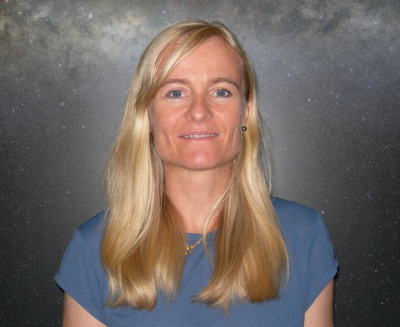Miroslava Dessauges

Biography
Miroslava Dessauges-Zavadsky received a physics degree from the University of Lausanne in 1999. She got a two-years PhD studentship at the European Southern Observatory (ESO Munich, Germany). She obtained her PhD degree in astrophysics from the University of Geneva in 2003, under the supervision of Prof. André Maeder (University of Geneva) and Prof. Sandro D’Odorico (ESO), working on the chemical abundances of high-redshift damped-Lyman-alpha systems. From 2003 to 2007, she was a SNF fellow at the Department of Astronomy of the University of Geneva. In 2007 she became a senior researcher at the University of Geneva with the aim to promote millimeter astronomy in Switzerland in the era of ALMA, the Atacama Large Millimeter/submillimeter Array. From 2010, she got a permanent position at the University of Geneva in the group of Prof. Daniel Schaerer. After being an expert on chemical abundance measurements in high-redshift galaxies using the high-resolution absorption line spectroscopy in the near-ultraviolet to optical wavelengths, she shifted her expertise to longer wavelengths from infrared with the Herschel satellite to millimeter with ALMA. Her main interest over the years remains the impact of star formation on the physical conditions of the interstellar medium of distant galaxies, located 8 billion light-years and more away.
Scientific interests
- Millimeter Astronomy:
search for molecular gas in cold and low excited media: CO surveys in High- Velocity Clouds and in external regions of disks of nearby spiral galaxies; search for CO in lensed high-redshift normal star-forming galaxies; study of the scaling star formation relations.
- Chemical abundances of high-redshift galaxies:
high-resolution optical spectroscopy of high-redshift galaxies (Lyman Break galaxies, damped Lyα systems): chemical evolution, interstellar medium studies; nucleosynthesis in the young Universe; variation of fundamental constants.
- Gamma-Ray Bursts (GRBs):
search for observational signatures of GRB progenitors; study of the GRB host galaxies at high- and low-redshift; interstellar medium analysis of the GRB host galaxies; GRB intervening material.
- Kinematics of high-redshift galaxies:
analysis of the kinematics of high-redshift galaxies using the integral field spectroscopy in the near-infrared and data cube as produced from interferometric observations: investigation of the evolution of the rotation-dominated systems with stellar mass; comparison of the ionised gas and cold molecular gas kinematics; search for footprints of stellar clumps on the galactic kinematics.
Projects
- Concept study of CODEX - COsmic Dynamics and EXoplanet spectrograph on the E-ELT
- Herschel Open Time Key Project - The Herschel Lensing Survey
- APINE: ALMA Large Program
